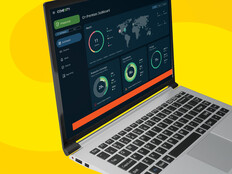Application Rationalization Is Only the First Step in Migration
Application rationalization is the first step in evaluating your infrastructure. But as The Application Rationalization Playbook, released by the Federal CIO Council, warns, “There is no one-size-fits-all application rationalization process, so agencies need to tailor their approach to fit mission, business, technology and security needs.”
Agencies also need to tailor their approach depending on the scope of their project — some application portfolios sprawl to the point where doing a full inventory before starting work can delay a project immeasurably. Identify the 10 applications that must be migrated or upgraded first, and you’ll have a manageable starting point.
Once the list of targets has been narrowed, the five R’s of rationalization come into play. Analyzing your environment through the lens of these concepts can help you choose the best path to follow for long-term cloud migration success.
Rehosting — a basic lift-and-shift to a new environment — is the quickest and simplest solution; it’s a fast route to freeing up data center space and cutting costs. But it may also be risky, because some applications must be refactored or upgraded before a move, and cloud benefits may not be seen right away as a result.
Agencies that want to move to Platform as a Service, where a third-party provider handles key services on the agency’s own infrastructure, may want to consider refactoring. Not all apps are compatible with a PaaS solution, and may need some tinkering to deliver properly in that context. Refactoring to meet PaaS requirements can also result in better outcomes — more speed and savings in the cloud, for example.
Rebuild or Replace Some Old IT
Aged equipment is common in many federal agencies; some are even operating with hardware that’s more than 50 years old, but that still performs critical functions. Anything that old won’t work well in an environment that didn’t exist when the solution was first deployed, and must be rearchitected to function in a new system.
Rearchitecting will almost certainly save money in the long run; the federal government itself estimates that about 80 percent of its IT budget goes to operations and maintenance.
Sometimes rearchitecting isn’t enough, and the app must be rebuilt. There are even cases where that’s not the solution, and replacing the app — not scheduling it for migration or upgrade — is the only answer.
Federal agencies pressed for time, staff and money can turn to third-party providers for help with this process, which is applicable to organizations of any size and clouds of any configuration. No matter how large or small the agency or the job, however, a good solid look at what kind of tech is on hand is critical before moving to the cloud.
This article is part of FedTech's CapITal blog series. Please join the discussion on Twitter by using the #FedIT hashtag.











